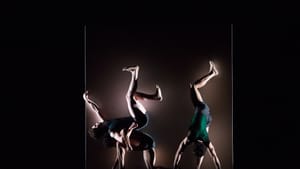Stay in the Loop
BSR publishes on a weekly schedule, with an email newsletter every Wednesday and Thursday morning. There’s no paywall, and subscribing is always free.
Some enchanted evening
Pennsylvania Ballet presents 'Romance' by Duato, Fonte, and Balanchine

In the program notes for his world-premiere “Ghost Stories,” Nicolo Fonte said his inspiration sprang from music by composers Ezio Bosso and Max Richter, in particular from the ease of that music’s ebb and flow. Fonte ably captured this ebb and flow. As the dance grew from a single dancer to many, then broke apart for duets and trios, the music rose to a crescendo, receded, and rose again on a dark stage lit by a whole ensemble of spotlights.
Martha Chamberlain’s always evocative costumes -- short grey dresses and leggings for the women and black pants and bare chests for the men -- enhanced the performance’s wistful, almost yearning mood. Fonte’s choreography called for precise movement, and the cast mostly delivered. A few spots needed tightening but did not intrude greatly on the overall harmony of the piece.
I was struck most by the lights: an entire grid of them above the dancers. Even when dancing in groups, each dancer seemed isolated in his or her own spot of light on an otherwise dark stage. Were the lights dancing partners or visual instruments adding to the lyrical music? I could not decide. But they were an integral part of the dance. Kudos to lighting designer Brad Fields for his masterful work.
Sly humor can be tricky
Going into the second piece, Nacho Duato’s “Remansos,” I was nervous. I’d only seen one of his works before, “Without Words,” and had disliked it. Happily, my preconceptions were totally wrong. “Remansos” -- which can mean either a backwater in a stream or a haven -- began with a pas de deux upon which a third dancer intruded, trying, with evident disappointment, to make it a trio. It was funny!
Offstage, Martha Koeneman, resident pianist, played the accompaniment: the simple, clear music of Enrique Granados. Meanwhile, the dancers moved fluidly through intricate, precise, and just-a-bit-awkward steps in twos and threes around a single rose placed center stage. It seemed we were watching a reflexive game of “What is a dance?”
The second half, the original dance around which the first half was built, might be the funniest piece of breathtaking movement I’ve ever seen. Three men -- Sterling Baca, Jermel Johnson, and Arian Molina Soca -- moved with delicious madness together, over, and around each other, a wall, and that indestructible rose. I still don’t believe some of those positions are humanly possible. It was my favorite part of the night.
Down-home fun
The evening ended with Balanchine’s “Western Symphony,” another piece of pure fun choreography. Choreographed around Hershy Kay’s score, absorbing and reimagining traditional songs of the West, “Western Symphony” is that strangest of ballet creations: a story ballet with no plot. Cowboys and saloon girls flirted on the main street of a Wild West town. The women’s bright costumes (by Frankie Fehr, after the original Barbara Karinska versions) sparkled, as did the dancing. It was a good way to say goodnight.
What, When, Where
Romance. Choreographed by Nicolo Fonte, Nacho Duato, and George Balanchine. Pennsylvania Ballet. Through April 9, 2017, at the Merriam Theater, 250 S. Broad Street, Philadelphia. (215) 893-1999 or paballet.org.
Sign up for our newsletter
All of the week's new articles, all in one place. Sign up for the free weekly BSR newsletters, and don't miss a conversation.

 Camille Bacon-Smith
Camille Bacon-Smith